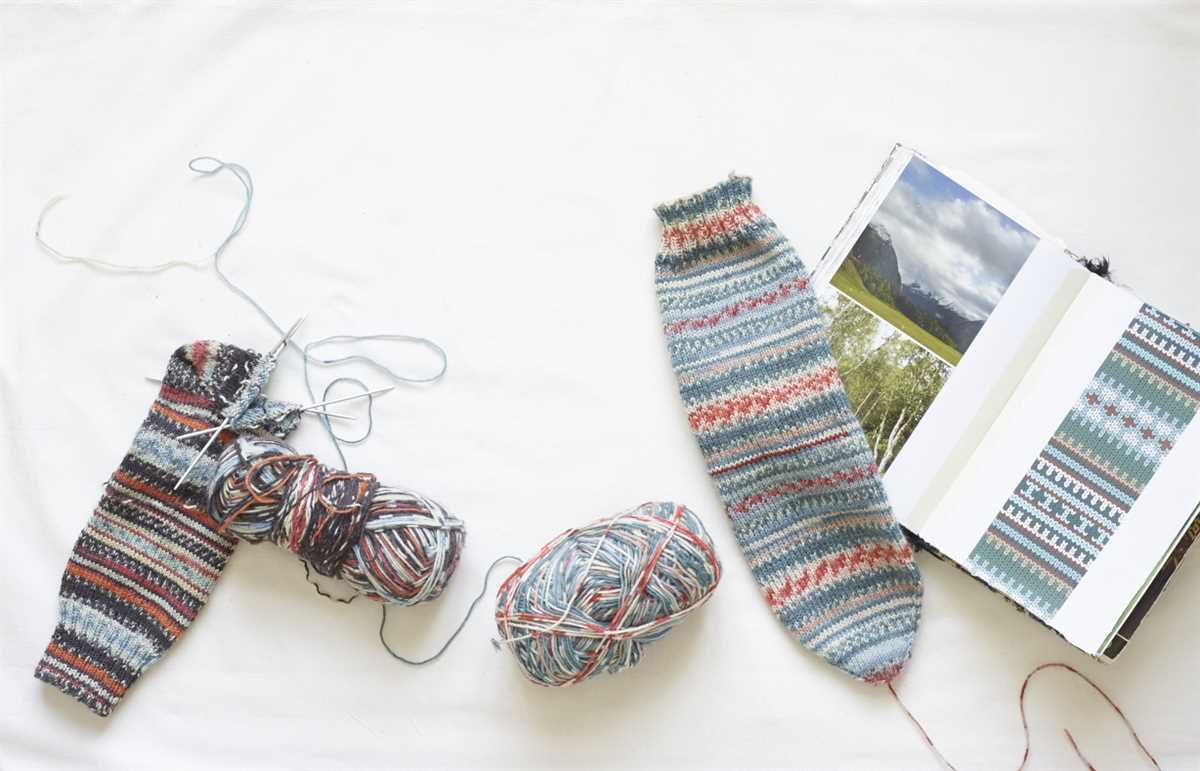
Are you looking for a new knitting project to keep you warm during those chilly nights? Look no further than bed socks! Bed socks are the perfect cozy accessory that will keep your feet toasty while you sleep. And the best part? You can knit them yourself with just two needles!
Knitting bed socks on two needles is a great option for beginners or those who prefer not to use double-pointed or circular needles. With just a basic knit and purl stitch, you can create a pair of comfortable and warm bed socks that will make your nights even more relaxing.
In this article, we will explore some free knitting patterns for bed socks on two needles. Whether you prefer a simple and classic design or something more intricate, there is a pattern out there for you. So grab your needles and yarn, and let’s get started on creating the perfect pair of bed socks!
About bed socks
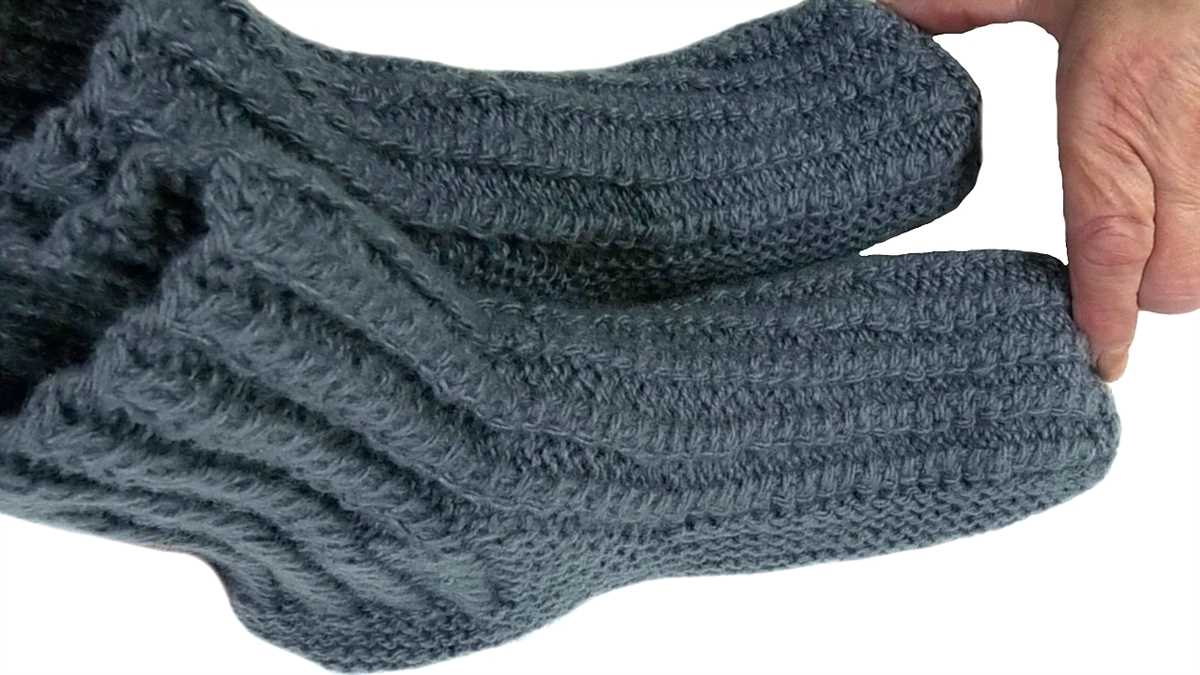
Bed socks are a cozy accessory that helps to keep your feet warm during the night. They are typically worn in bed or around the house to provide extra insulation and comfort. Bed socks are often knitted with soft and warm yarns, such as wool or alpaca, to provide maximum warmth and coziness.
One of the great things about bed socks is that they can be customized to fit your personal style and preferences. There are numerous knitting patterns available for bed socks, ranging from simple and basic designs to more intricate and decorative ones. Whether you prefer plain and classic bed socks or ones with intricate patterns and embellishments, you are sure to find a knitting pattern that suits your taste and skill level.
Why knit bed socks on two needles?
Knitting bed socks on two needles is a popular choice among knitters because it allows for ease and flexibility in the knitting process. Unlike knitting in the round with circular needles or double-pointed needles, knitting on two needles simplifies the knitting process and is great for those who are new to knitting or prefer a more straightforward approach.
- Unlike circular needles or double-pointed needles, two straight needles make it easier to handle your knitting.
- Knitting on two needles also allows for more control over your tension and stitch formation.
- Knitting bed socks on two needles also allows for easier adjustments and modifications to the pattern, as you can easily undo and redo stitches if needed.
Where to find free knitting patterns for bed socks on two needles?
If you’re looking for free knitting patterns for bed socks on two needles, there are several websites and online platforms that offer a wide range of options. Some popular websites for free knitting patterns include Ravelry, LoveKnitting, and KnittingPatternCentral. These websites have extensive collections of knitting patterns, including many options for bed socks specifically designed for knitting on two needles.
In addition to online platforms, you can also find free knitting patterns for bed socks on two needles in knitting books and magazines that focus on knitting accessories and garments. Local libraries and knitting groups may also have resources and patterns available for borrowing or sharing.
Benefits of knitting your own bed socks
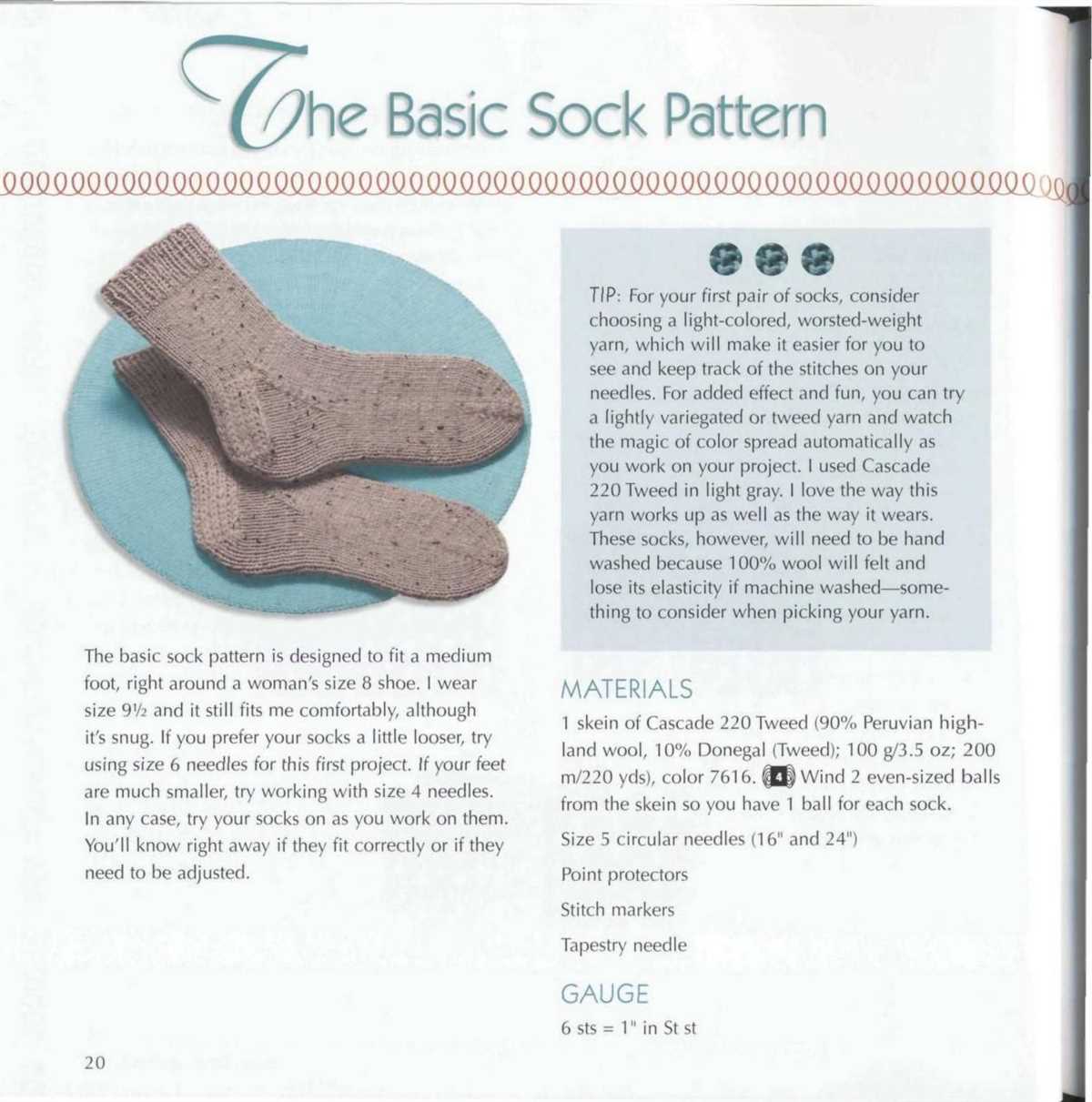
Knitting your own bed socks can be a rewarding and enjoyable activity with several benefits. Whether you are an experienced knitter or just a beginner, making your own bed socks offers a range of advantages.
- Customization: Knitting your own bed socks allows you to create a pair that fits perfectly. You can adjust the size, length, and style according to your preferences. This ensures maximum comfort and satisfaction.
- Quality materials: By knitting your own bed socks, you have control over the materials used. You can choose high-quality yarns that are soft, warm, and durable, ensuring that your bed socks will last for a long time.
- Cost-effective: Knitting your own bed socks can save you money in the long run. While the upfront cost of materials may seem higher than buying ready-made socks, you can create multiple pairs with just one skein of yarn. Plus, you can reuse leftover yarn for other knitting projects.
- Handmade with love: The act of knitting your own bed socks allows you to put your love and care into each stitch. Handmade items are often cherished more and can make thoughtful gifts for loved ones.
- Relaxation and mindfulness: Knitting has been known to promote relaxation and mindfulness. The repetitive motion of knitting can help reduce stress, increase focus, and provide a sense of calm. Knitting your own bed socks can be a peaceful and therapeutic activity.
Overall, knitting your own bed socks not only provides you with a cozy and personalized pair of socks, but it also allows you to indulge in a fulfilling and creative hobby. With the numerous benefits it offers, knitting your own bed socks is a rewarding endeavor for anyone interested in knitting.
Choosing the right yarn for bed socks
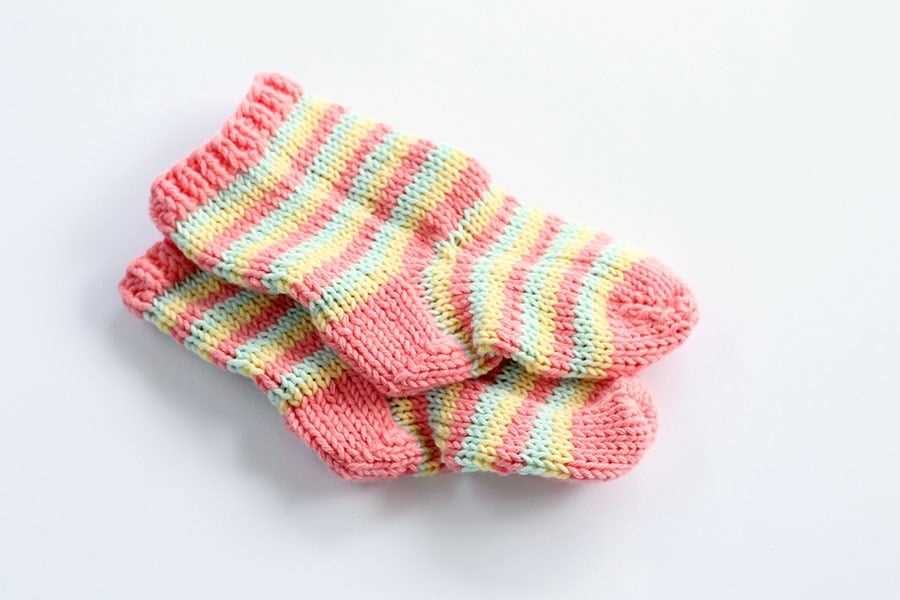
When it comes to choosing the yarn for your bed socks, there are a few key factors to consider. The yarn you select will greatly impact the comfort, warmth, and durability of your socks. It is important to choose a yarn that is both soft and insulating, ensuring that your feet stay cozy throughout the night.
Fiber content: The first thing to consider is the fiber content of the yarn. Natural fibers, such as wool, alpaca, or cashmere, are great options for bed socks as they are breathable, insulating, and soft against the skin. They provide excellent warmth and can wick away moisture, keeping your feet dry and comfortable. However, if you have any allergies or sensitivities, you might prefer to opt for acrylic or bamboo yarns, which are also soft and lightweight.
Weight: The weight of the yarn is another important factor to consider. For bed socks, you will want to choose a yarn that is medium to heavy in weight. This will help ensure that your socks are warm and cozy, providing the necessary insulation to keep your feet snug during colder nights. A yarn with a gauge of 4 to 5 stitches per inch is generally a good choice for bed socks.
Durability: Since bed socks are intended for regular use, it’s important to choose a yarn that is durable and long-lasting. Look for yarns that are known for their strength and resistance to abrasion. Acrylic blends or yarns with a high twist are often good options for durability. It’s also worth considering yarns that are machine-washable, as this will make caring for your bed socks much easier.
By taking these factors into account, you can choose the perfect yarn for your bed socks. Whether you prioritize warmth, softness, or ease of care, there is a wide variety of yarns available that will meet your needs and help you create cozy, comfortable bed socks for yourself or as a gift.
Getting Started with Knitting Bed Socks
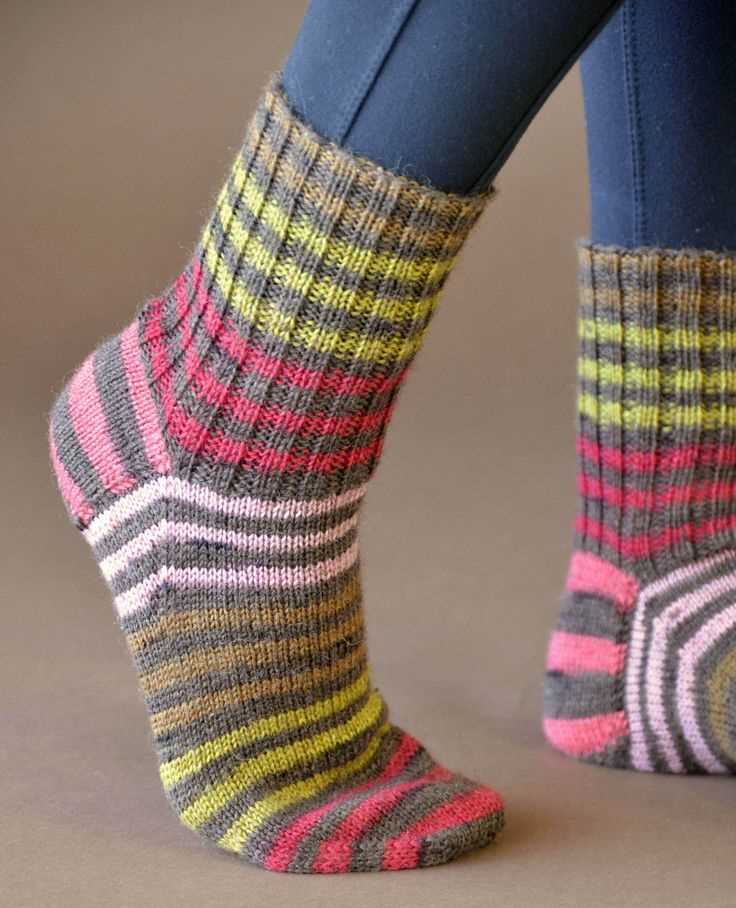
If you’re looking for a cozy and practical knitting project, bed socks are a great choice. Ideal for keeping your feet warm during those chilly nights, bed socks are also a fun and quick project to take on. Whether you’re a beginner knitter or more experienced, knitting bed socks on two needles offers a simple and satisfying way to craft your own comfy footwear.
Gathering Your Materials
Before you get started, make sure you have all the necessary materials on hand. You’ll need a pair of knitting needles, yarn, scissors, a yarn needle, and any additional embellishments you’d like to add to your bed socks. Consider using a soft and warm yarn, such as merino wool or alpaca, for that extra cozy feel.
Selecting a Pattern
With a variety of free knitting patterns available online, you can easily find the perfect design for your bed socks. Look for patterns specifically designed for two needles if you prefer not to use circular or double-pointed needles. Pay attention to the skill level indicated in the pattern to ensure it matches your knitting abilities.
Casting On and Knitting
Once you’ve chosen your pattern, it’s time to cast on and begin knitting. Follow the instructions provided, which may include ribbing for the cuff, plain knitting for the body, and decreasing for the toe. Take your time and enjoy the rhythmic motion of knitting as you create each stitch.
Finishing Touches
Once you’ve completed the main body of the sock, it’s time to add any desired embellishments, such as buttons, pom-poms, or lace trim. Sew them on securely using your yarn needle. Don’t forget to weave in any loose ends to give your bed socks a neat and polished finish.
Try Them On
After all your hard work, it’s time to slip on your newly knitted bed socks and enjoy their warmth and comfort. Take a moment to appreciate your handiwork and revel in the satisfaction of creating something cozy and practical with just a couple of knitting needles and some yarn.
Basic knitting stitches for bed socks
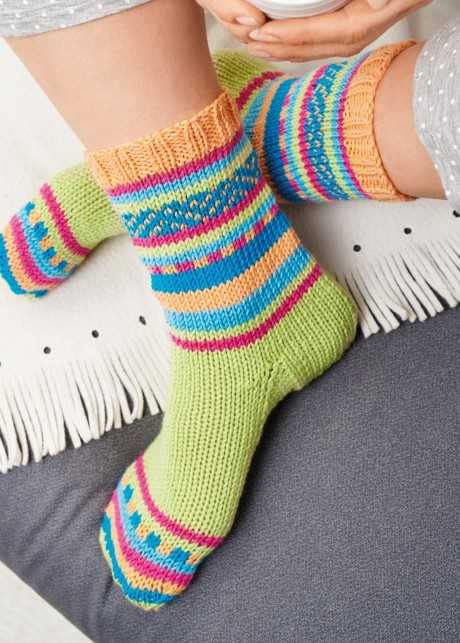
When it comes to knitting bed socks, it’s important to have a strong foundation of basic knitting stitches. These stitches will form the building blocks for your sock and determine its texture, stretch, and overall appearance. Here are a few essential stitches to master:
1. Knit stitch:
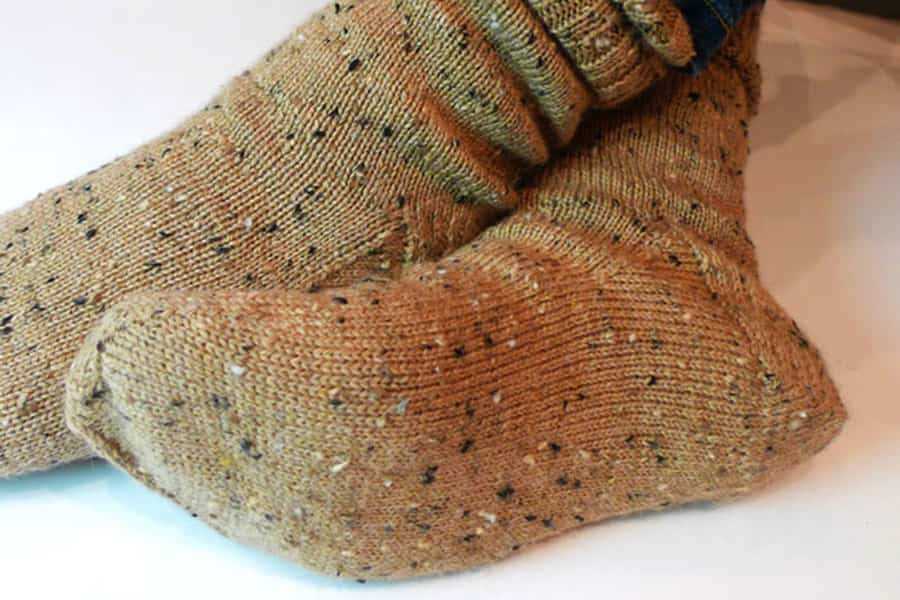
The knit stitch is the most basic and fundamental stitch in knitting. It creates a smooth and flat surface on the right side of the fabric. To knit, simply insert the right needle from left to right into the first stitch on the left needle. Wrap the working yarn around the right needle counterclockwise and pull it through the stitch, slipping the old stitch off the left needle. Repeat this process for each stitch on the needle.
2. Purl stitch:
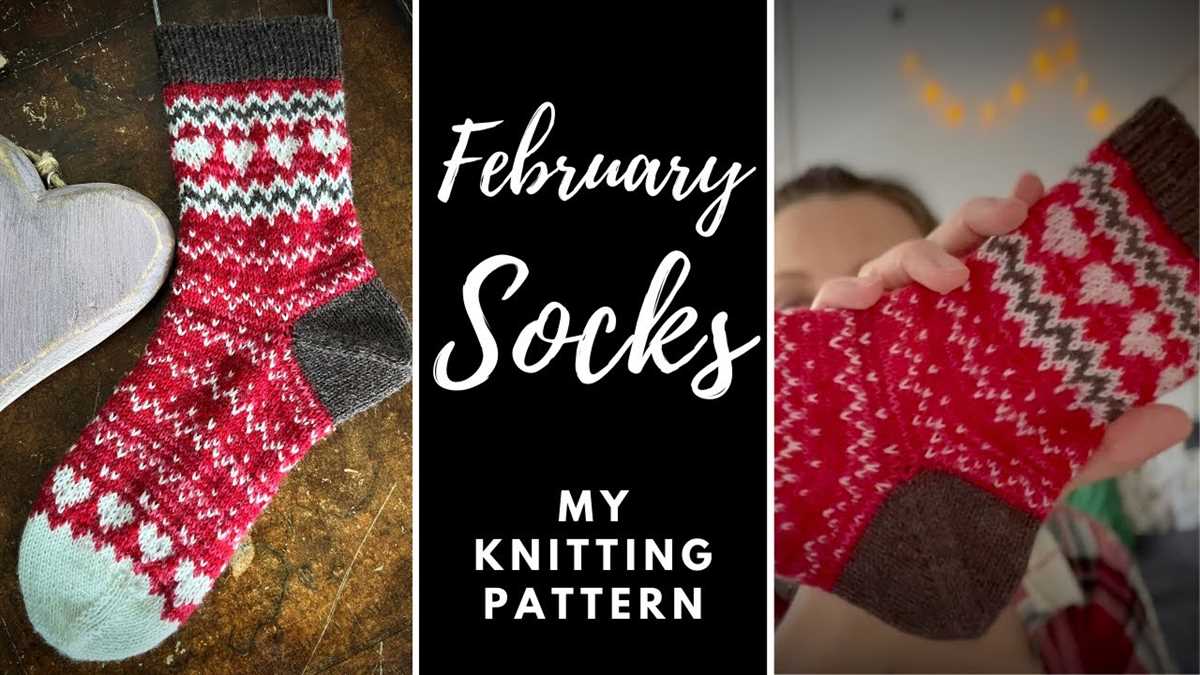
The purl stitch is the opposite of the knit stitch and creates a bumpy texture on the right side of the fabric. To purl, insert the right needle from right to left into the first stitch on the left needle. Wrap the working yarn counterclockwise around the right needle and pull it through the stitch, slipping the old stitch off the left needle. Repeat for each stitch on the needle.
3. Rib stitch:
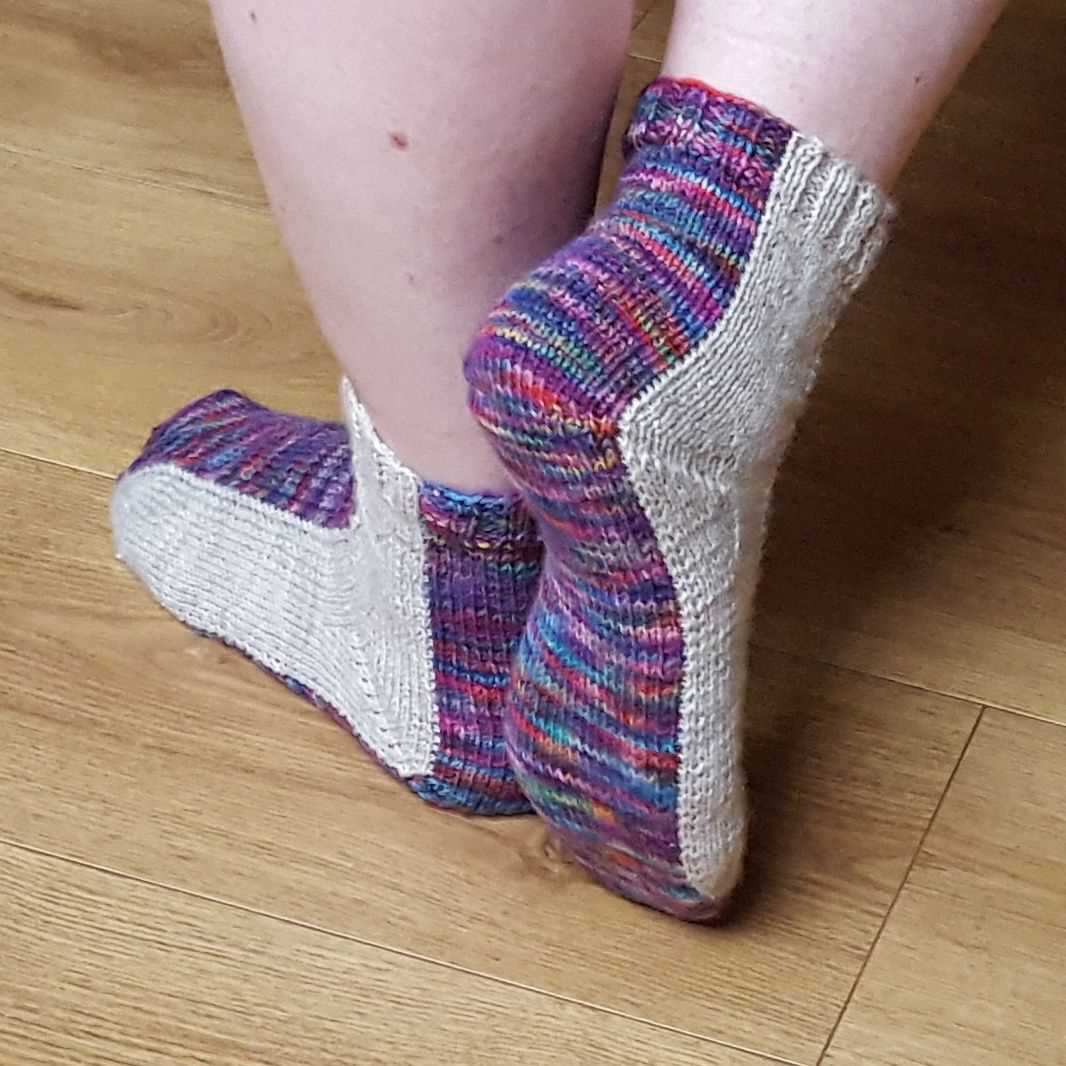
Rib stitch is a combination of knit and purl stitches and is commonly used for cuffs and bands in bed socks. A common rib stitch pattern is “k2, p2” – knit two stitches, then purl two stitches, and repeat this pattern across the row. The result is a stretchy and elastic fabric.
4. Stockinette stitch:
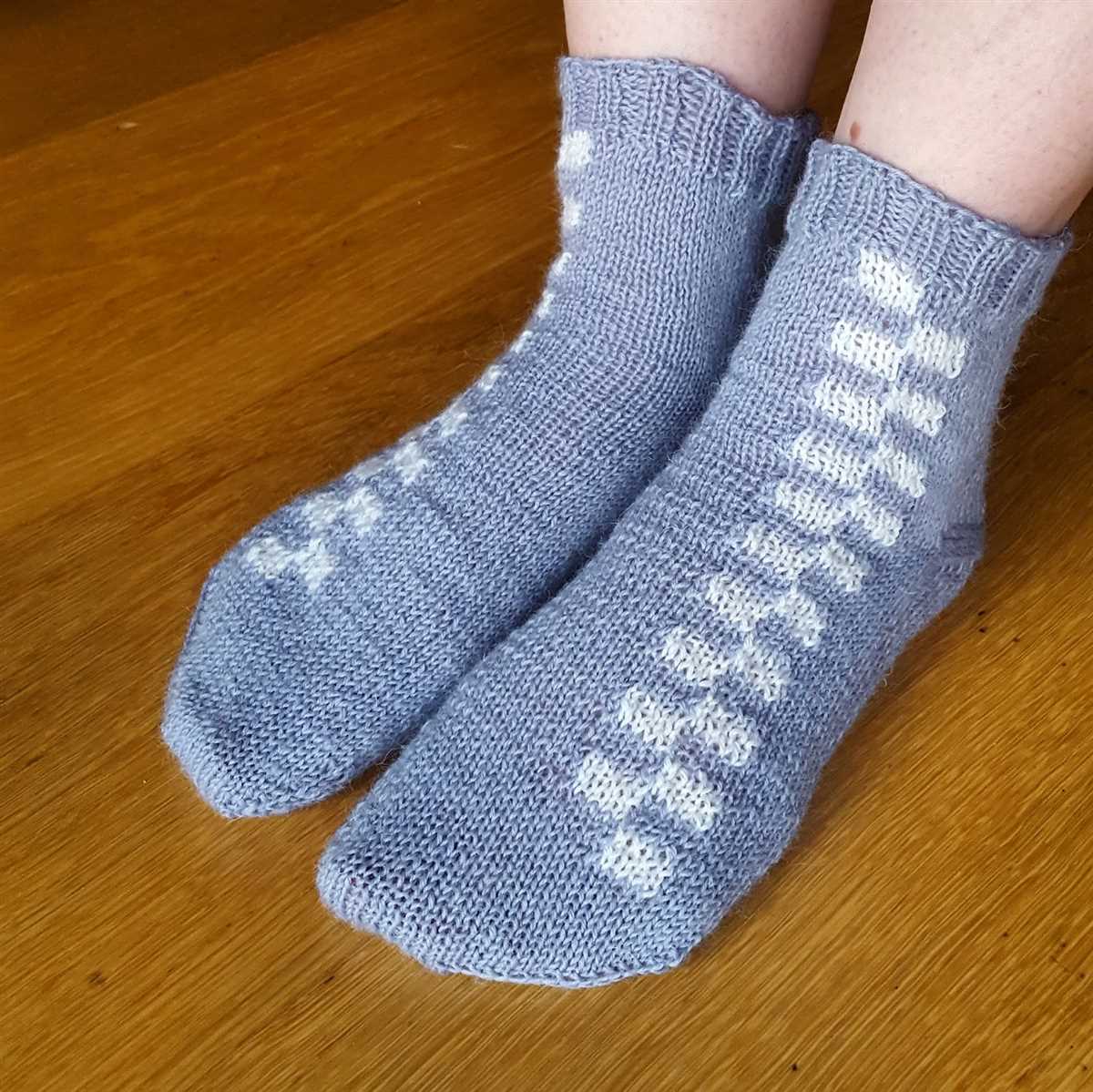
Stockinette stitch is created by alternating rows of knit and purl stitches. On the right side (knit row), knit every stitch. On the wrong side (purl row), purl every stitch. This creates a smooth surface on the right side and a bumpy texture on the wrong side. It’s commonly used for the main body of bed socks.
By mastering these basic knitting stitches, you’ll have the skills needed to create cozy and comfortable bed socks using two needles. Feel free to experiment with different stitch patterns and textures to make your bed socks uniquely yours!
Beginner-friendly knitting patterns for bed socks
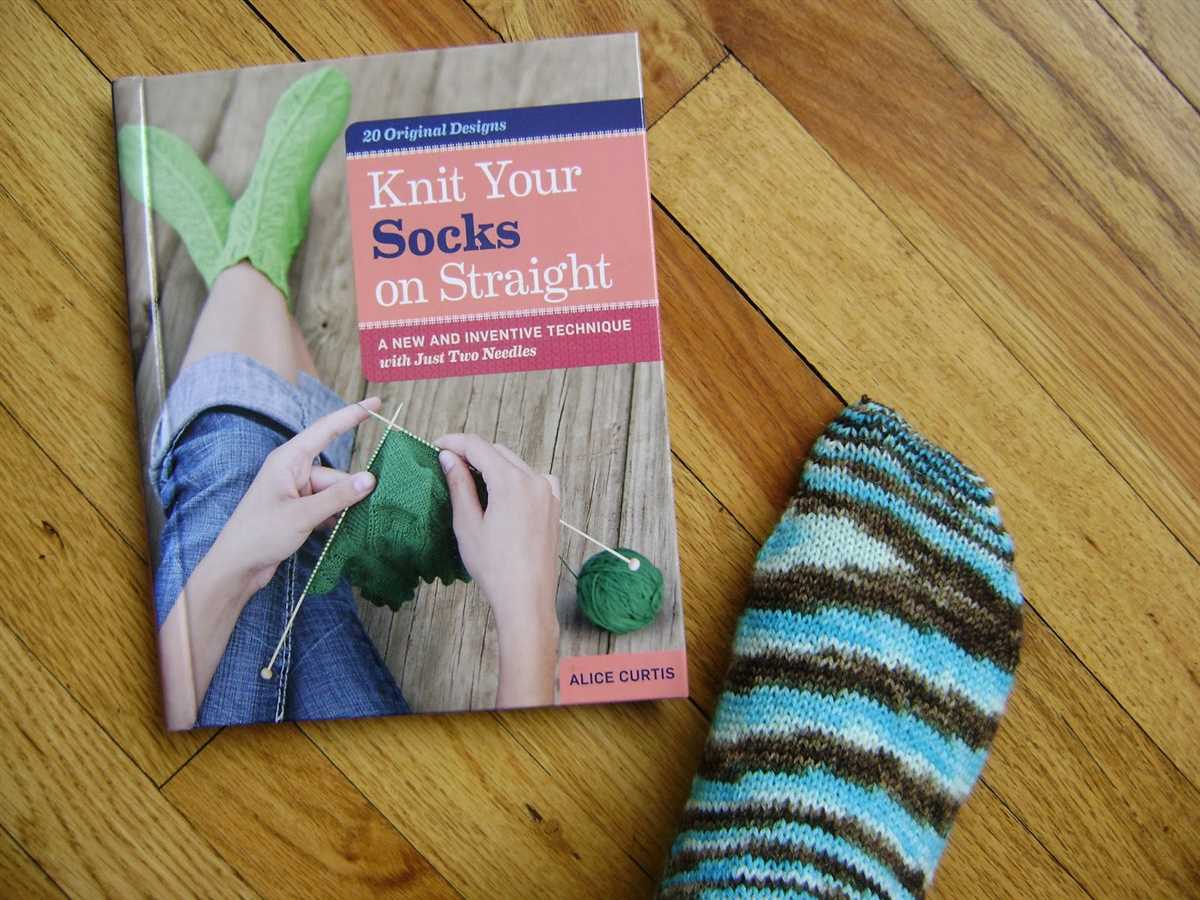
Knitting bed socks can be a relaxing and rewarding project for beginners. If you are new to knitting or looking for a simple and satisfying project, here are a few beginner-friendly knitting patterns for bed socks that you can try.
1. Basic Ribbed Bed Socks
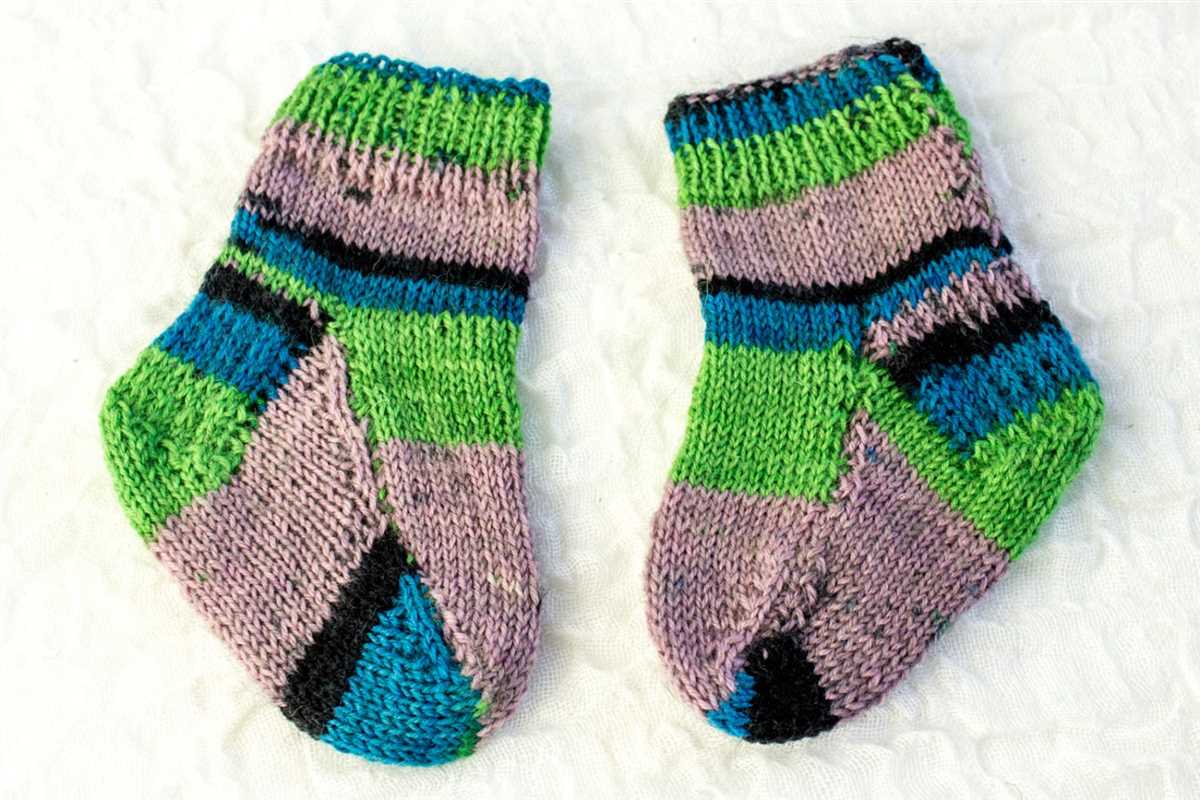
If you want to start with a simple pattern, try knitting basic ribbed bed socks. This pattern uses basic knit and purl stitches to create a stretchy ribbed texture. With just two needles, you can easily knit these cozy socks. The ribbed design ensures a snug fit and adds a touch of elegance to your socks.
2. Basketweave Bed Socks
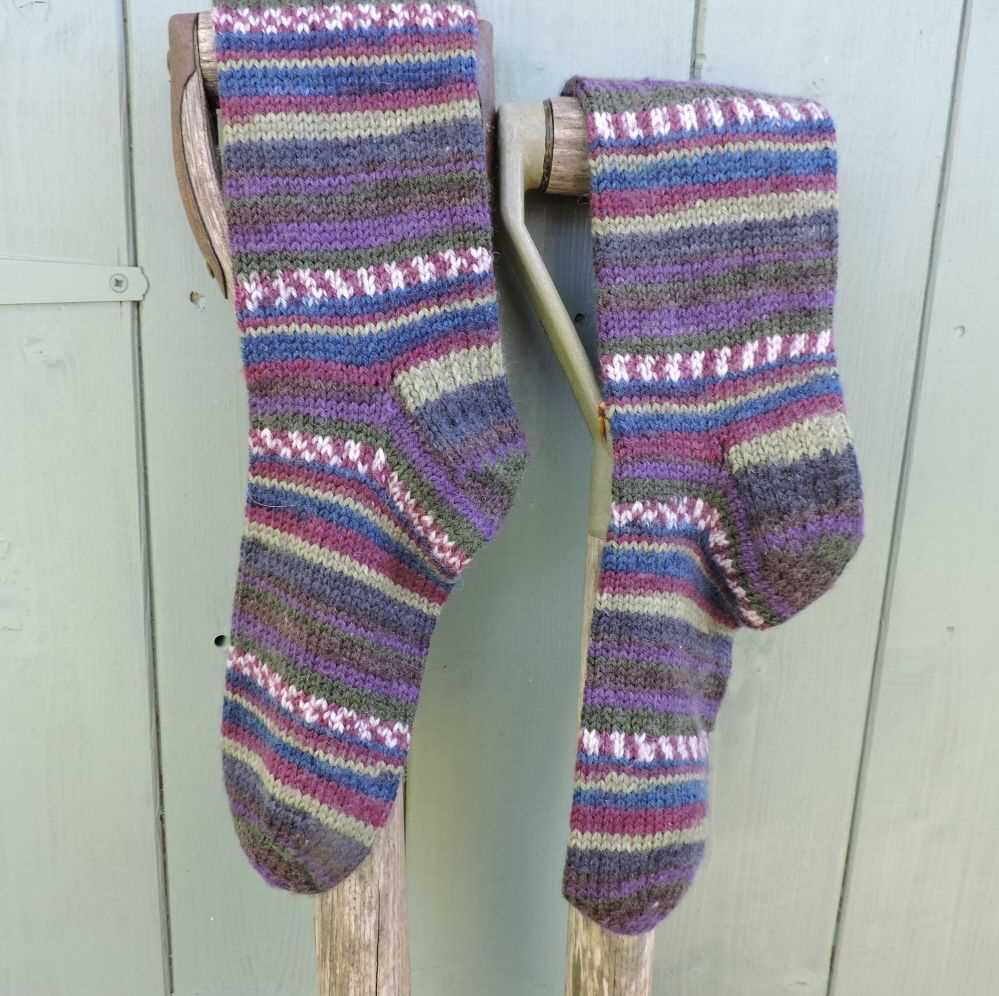
Add some texture to your bed socks with a basketweave pattern. This pattern involves knitting and purling in a specific pattern to create a woven-like appearance. It may sound complicated, but it’s actually quite simple once you get the hang of it. The basketweave pattern adds a cozy and stylish touch to your bed socks.
3. Cable Knit Bed Socks
If you’re up for a slightly more challenging project, try knitting cable knit bed socks. Cable knitting involves crossing stitches to create beautiful twisted patterns. While it may seem intimidating at first, with a bit of practice, you’ll be able to create intricate cable designs. Cable knit bed socks not only keep your feet warm but also add a touch of sophistication to your loungewear.
These beginner-friendly knitting patterns for bed socks are perfect for those who are new to knitting or looking for a simple project. Whether you prefer a basic ribbed design, a textured basketweave pattern, or an intricate cable knit, you can find a pattern that suits your skill level and style. Grab your knitting needles and cozy up with a relaxing knitting project today!
Intermediate knitting patterns for bed socks
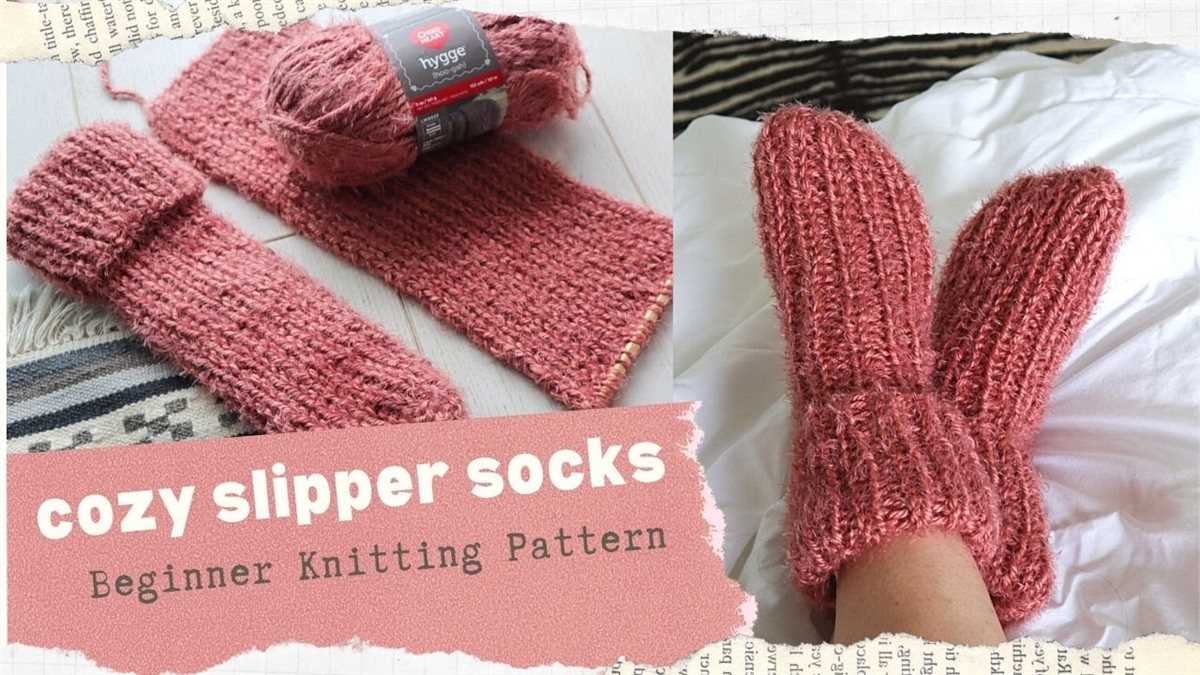
For knitters looking to challenge themselves and expand their skills, intermediate knitting patterns for bed socks are a great project to take on. These patterns often incorporate more complex stitch patterns and techniques, giving you the opportunity to further develop your knitting abilities.
One intermediate knitting pattern for bed socks that you can try is the cable knit bed socks. This pattern features a beautiful cable design that runs along the front of the sock, adding both texture and visual interest. With the use of a cable needle, you’ll be able to create intricate twists and turns in your knitting, resulting in a pair of cozy and stylish bed socks.
Cable Knit Bed Socks Pattern:
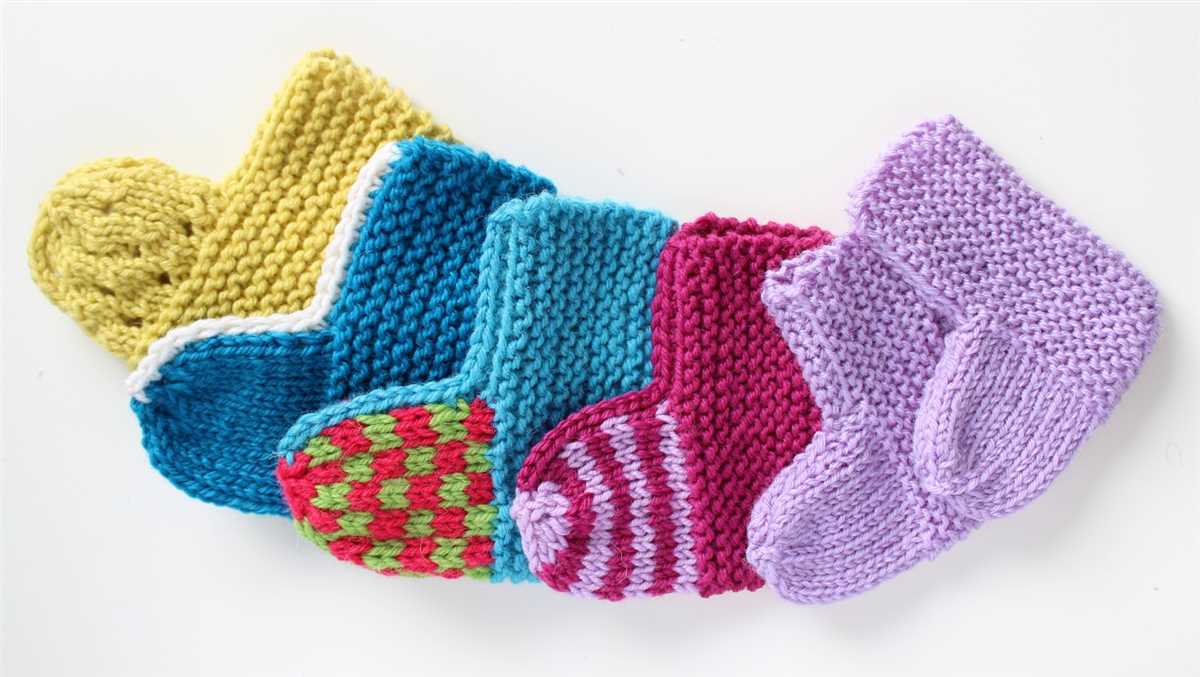
- Materials needed:
- Worsted weight yarn
- US size 7 (4.5 mm) knitting needles
- Cable needle
- Tapestry needle
- Cast on 48 stitches.
- Begin with a ribbed cuff: *K2, P2* for 2 inches.
- Continue with cable pattern:
Round 1: *K4, P2* to end of round.
Round 2: *K2, P4* to end of round.
Round 3: *Cable 4 Back, P2* to end of round.
Round 4: *K2, P4* to end of round.
Repeat Rounds 1-4 until sock measures desired length.
- Complete the foot by knitting all stitches for the desired length.
- To shape the toe, follow a standard toe decrease pattern until 8 stitches remain.
- Bind off, weave in ends, and repeat for the second sock.
Intermediate knitting patterns for bed socks allow you to take your knitting skills to the next level while creating something cozy and functional. Whether you choose to try a cable knit design or explore other intermediate level techniques, these patterns provide an opportunity for growth and creativity in your knitting journey.
Advanced knitting patterns for bed socks

For experienced knitters looking to challenge themselves and create an intricate pair of bed socks, there are several advanced knitting patterns available. These patterns often incorporate more complex stitch patterns and techniques, resulting in a beautifully crafted pair of socks that are both cozy and stylish.
One advanced knitting pattern that is popular for bed socks is the cable and lace design. This pattern combines the elegance of lace stitches with the intricacy of cable knitting, resulting in a gorgeous texture and pattern. Knitters will need to be comfortable with both techniques and follow a chart or written instructions to create the desired look.
- Materials needed: Worsted weight yarn, US size 6 (4mm) knitting needles, cable needle, stitch markers
- Pattern:
| Row | Instructions |
|---|---|
| 1 | Cast on 64 stitches |
| 2-6 | Work in K2, P2 ribbing |
| 7 | Begin cable and lace pattern: Work row 1 of the chart or follow written instructions |
| 8-14 | Continue working cable and lace pattern, following the chart or written instructions |
| 15-20 | Switch to stockinette stitch |
| 21-26 | Work in K2, P2 ribbing |
| 27 | Bind off all stitches |
This advanced pattern requires a good understanding of stitch patterns and the ability to read charts or written instructions. The results, however, are well worth the effort, as the combination of cables and lace creates a unique and eye-catching design for your bed socks.
Another advanced knitting pattern for bed socks is the Fair Isle design. This technique involves working with multiple colors in a single row to create intricate patterns and motifs. Knitters will need to be comfortable with colorwork and carrying yarns to create the beautiful designs that make Fair Isle knitting so popular.
- Materials needed: Fingering weight yarn in multiple colors, US size 3 (3.25mm) knitting needles, stitch markers
- Pattern:
| Row | Instructions |
|---|---|
| 1 | Cast on 72 stitches |
| 2-5 | Work in K1, P1 ribbing |
| 6-10 | Begin Fair Isle pattern: Follow the chart or written instructions, changing colors as indicated |
| 11-20 | Continue working Fair Isle pattern |
| 21-25 | Switch to stockinette stitch in main color |
| 26-29 | Work in K1, P1 ribbing |
| 30 | Bind off all stitches |
The Fair Isle design adds a touch of sophistication and intricacy to your bed socks, making them a true work of art. Knitters who are up for the challenge will be rewarded with a beautiful pair of socks that are as fun to knit as they are to wear.
Tips for knitting bed socks on two needles
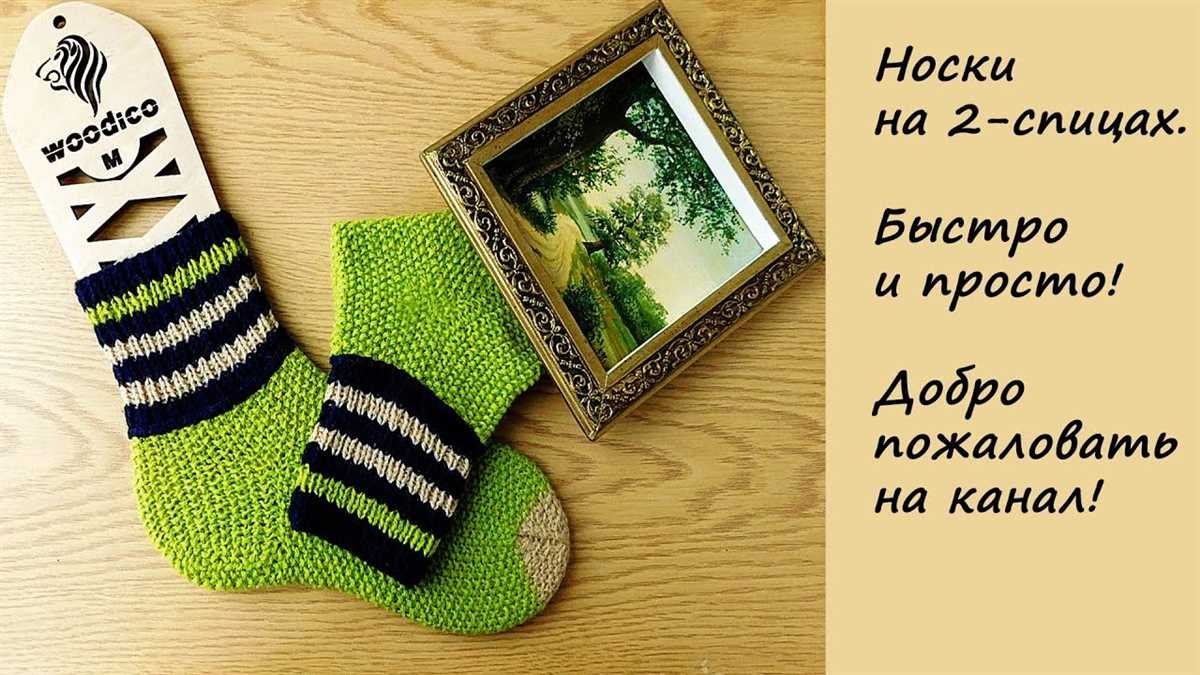
Knitting bed socks on two needles can be a fun and rewarding project. Whether you are a beginner or an experienced knitter, here are some useful tips to help you create cozy and comfortable bed socks.
1. Choose the right yarn: When knitting bed socks, it is important to choose a yarn that is soft, warm, and comfortable against the skin. Look for a yarn that has a blend of natural fibers, such as wool or alpaca, as these materials are known for their warmth and softness. Avoid using yarns that are too bulky or scratchy for bed socks.
2. Select the appropriate needle size: The needle size you choose will depend on the yarn weight you are using. Thicker yarns will require larger needles, while thinner yarns will require smaller needles. Make sure to check the recommended needle size on your yarn label and use the appropriate needles for your project.
3. Follow a pattern: If you are new to knitting bed socks, it can be helpful to start with a pattern. There are many free knitting patterns available online that are specifically designed for bed socks knitted on two needles. Following a pattern will ensure that you are using the correct stitch count and shaping techniques to create a well-fitting pair of socks.
4. Pay attention to gauge: Gauge refers to the number of stitches and rows per inch in your knitting. It is important to match the gauge indicated in your pattern to ensure that your bed socks will fit correctly. Use a gauge swatch to measure your knitting and adjust your needle size if necessary to achieve the correct gauge.
5. Add embellishments: Once you have mastered the basic bed sock pattern, you can get creative and add embellishments to personalize your socks. Consider adding buttons, lace trim, or contrasting colors to make your bed socks unique. Just be sure to sew on any embellishments securely to prevent them from coming loose during wear.
6. Practice proper finishing techniques: Finishing techniques, such as seaming and weaving in ends, are essential for a professional-looking pair of bed socks. Take your time to neatly finish off your socks, ensuring that all seams are secure and any loose ends are woven in. This will give your bed socks a polished and tidy appearance.
With these tips in mind, you will be well-equipped to knit cozy bed socks on two needles. Enjoy the process of creating warm and comfortable socks that will keep your feet toasty during those cold winter nights.
Adding decorative elements to your bed socks
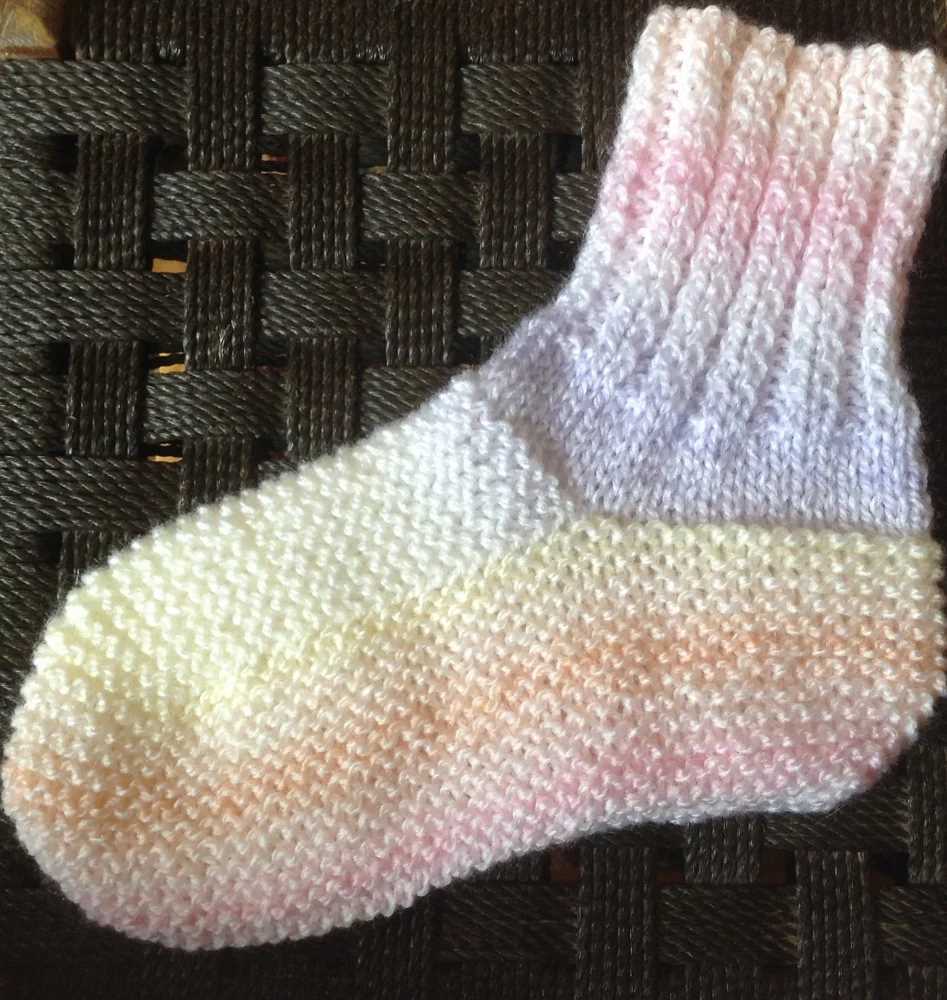
Bed socks are not only meant to keep your feet warm and cozy, but they can also be a fun and stylish accessory. By adding decorative elements to your bed socks, you can elevate their look and make them even more special. Whether you prefer a simple design or something more intricate, there are many options to choose from.
1. Embroidery: One way to add a decorative touch to your bed socks is by embroidering them. You can use colorful threads to create beautiful patterns or designs on the cuffs or toes of your socks. This can be as simple as adding a few flowers or dots, or you can get creative and embroider your initials or a personalized message.
2. Lace trim: Lace trim is another great option for adding a feminine and elegant touch to your bed socks. You can sew a delicate lace trim along the edges of the cuffs or even add a panel of lace to the front of the socks. This can instantly give your socks a more decorative and glamorous look.
3. Buttons: Buttons are not only functional but can also be a great decorative element for your bed socks. You can sew small buttons along the cuff or use larger buttons as a focal point on the front of the sock. Choose buttons in different colors or shapes to add an extra pop of style to your socks.
4. Ribbons: Adding ribbons to your bed socks can create a whimsical and romantic look. You can thread thin ribbons through eyelets along the cuffs or tie a ribbon bow on the front of the socks. This can be a simple and effective way to add a touch of charm to your bed socks.
- Experiment with different decorative elements to find your unique style.
- Remember to choose materials that are comfortable against the skin and won’t cause any irritation.
- Have fun and let your creativity soar when adding decorative elements to your bed socks.
Troubleshooting Common Issues when Knitting Bed Socks
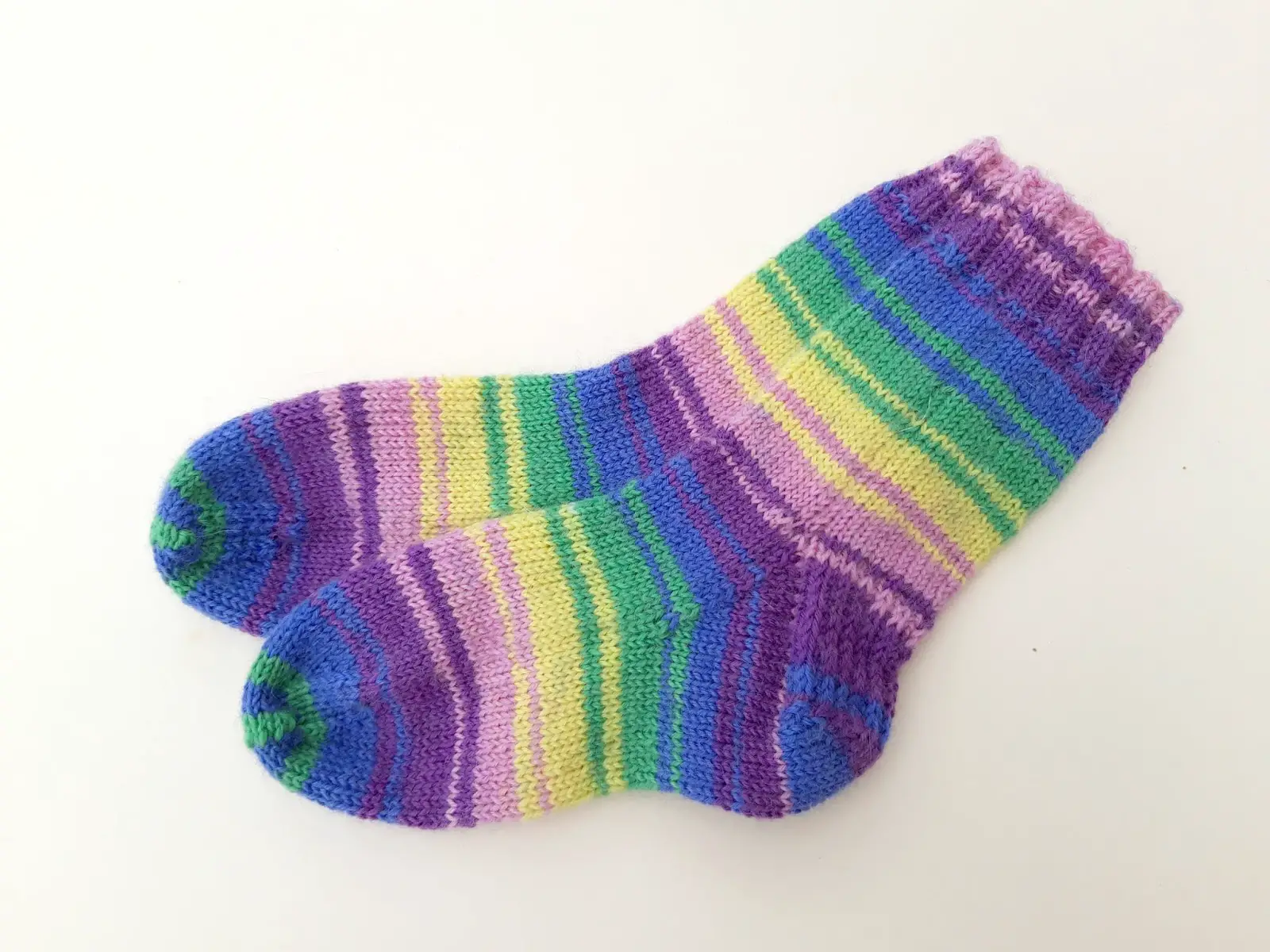
While knitting bed socks can be a relaxing and enjoyable hobby, it’s not uncommon to encounter a few challenges along the way. Here are some common issues that knitters may face and tips on how to troubleshoot them:
Problem: Uneven tension or stitches
Uneven tension or stitches can result in bed socks that don’t fit properly or have an inconsistent appearance. This can be caused by various factors, including different levels of tension in your hands or using different knitting techniques.
Solution:
- Practice consistent tension by consciously adjusting how tightly you hold the yarn.
- Take breaks during knitting sessions to relax your hands and avoid fatigue, which can lead to uneven tension.
- Experiment with different knitting techniques, such as English or Continental, to see which method gives you more consistent results.
- If tension issues persist, consider taking a knitting class or seeking guidance from experienced knitters for personalized tips.
Problem: Twisted stitches
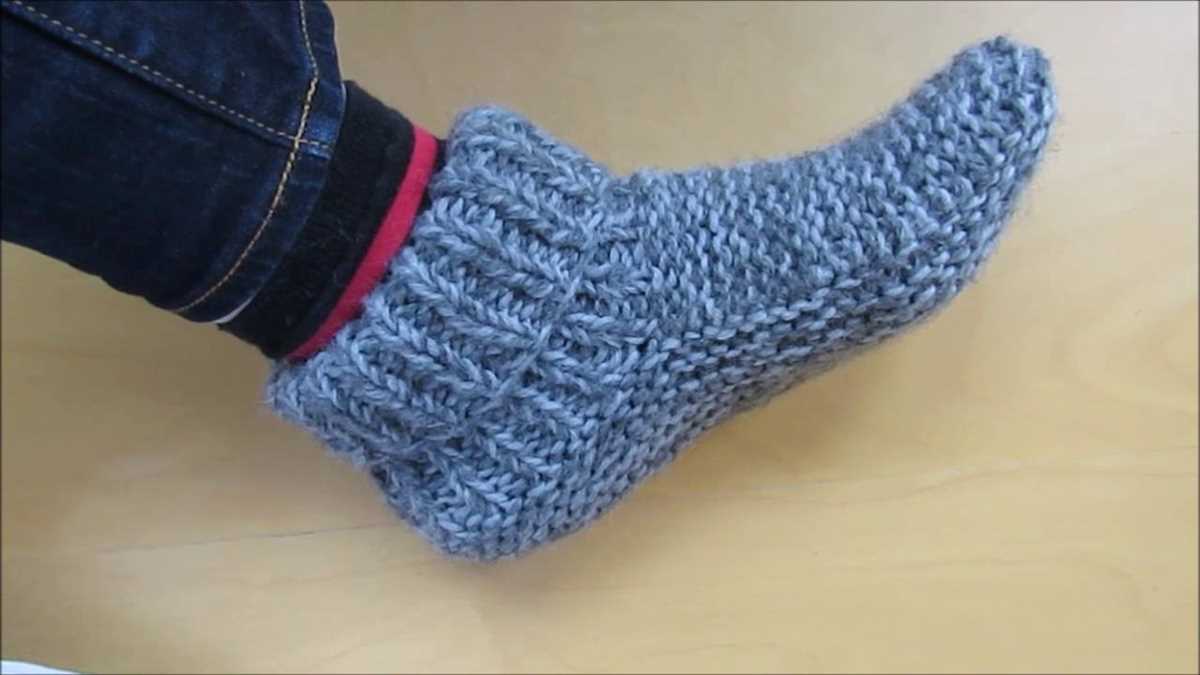
Twisted stitches can make the sock look distorted and affect the overall fit. They occur when the stitches are twisted while being knitted, resulting in a different appearance from regular knit stitches.
Solution:
- Pay attention to the direction of your stitches as you knit. Make sure the leading leg of the stitch is in the front for regular knit stitches.
- If you notice twisted stitches, carefully unravel the affected rows and re-knit them correctly.
- Double-check your knitting technique to ensure you’re not inadvertently twisting the stitches.
Problem: Dropped stitches
Dropping a stitch means that a stitch has slipped off the knitting needle, which can cause holes and unraveling in the sock.
Solution:
- If you spot a dropped stitch, try not to panic or pull your work too tightly, as this can make the problem worse.
- Secure the dropped stitch by placing a stitch marker or safety pin through it to prevent further unraveling.
- Carefully work the dropped stitch back up to the current row using a crochet hook or the knitting needle, following the stitch pattern.
- If the dropped stitch is too far down or you’re unfamiliar with fixing dropped stitches, consider seeking assistance from an experienced knitter or referring to online tutorials for guidance.
In conclusion, knitting bed socks is a rewarding project that can provide cozy and comfortable accessories for your feet. By troubleshooting common issues like uneven tension, twisted stitches, and dropped stitches, you can enhance your knitting skills and create beautiful socks that will keep your feet warm and cozy.